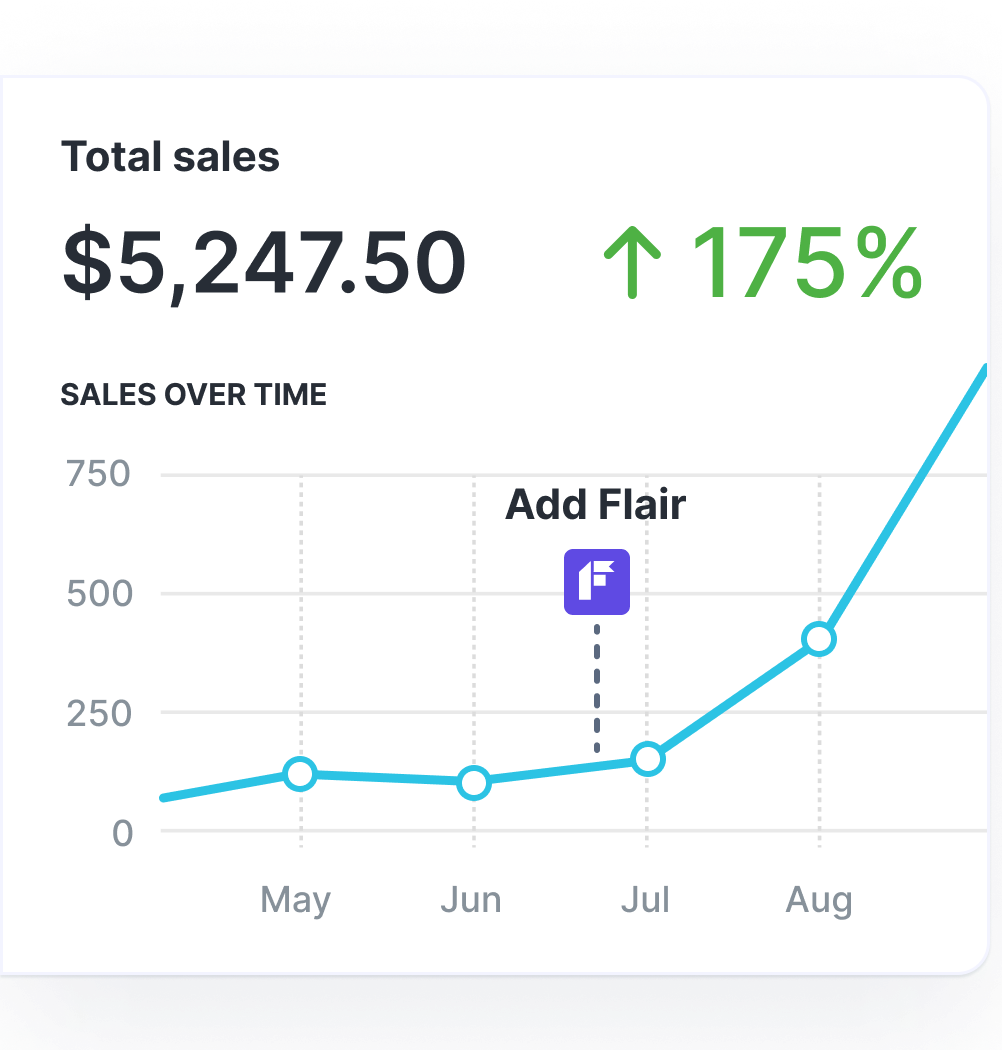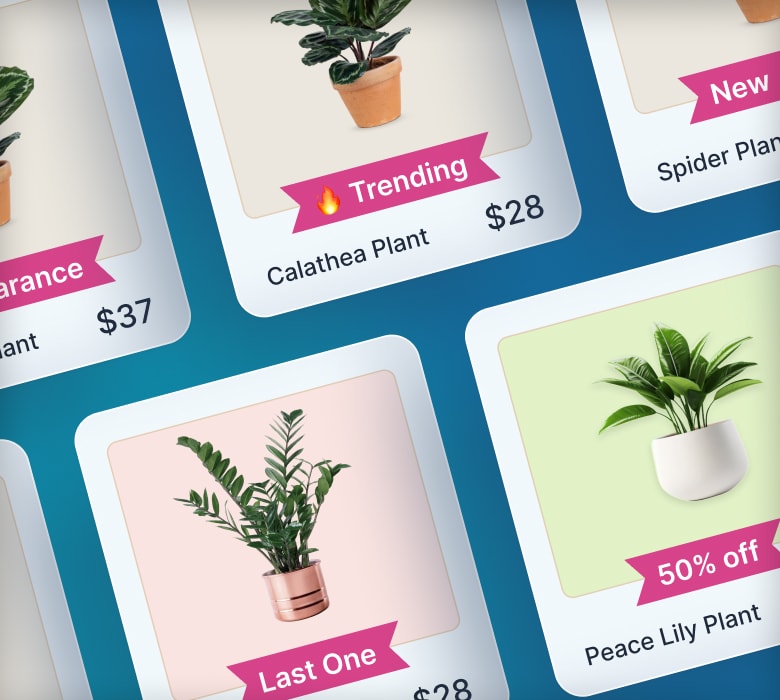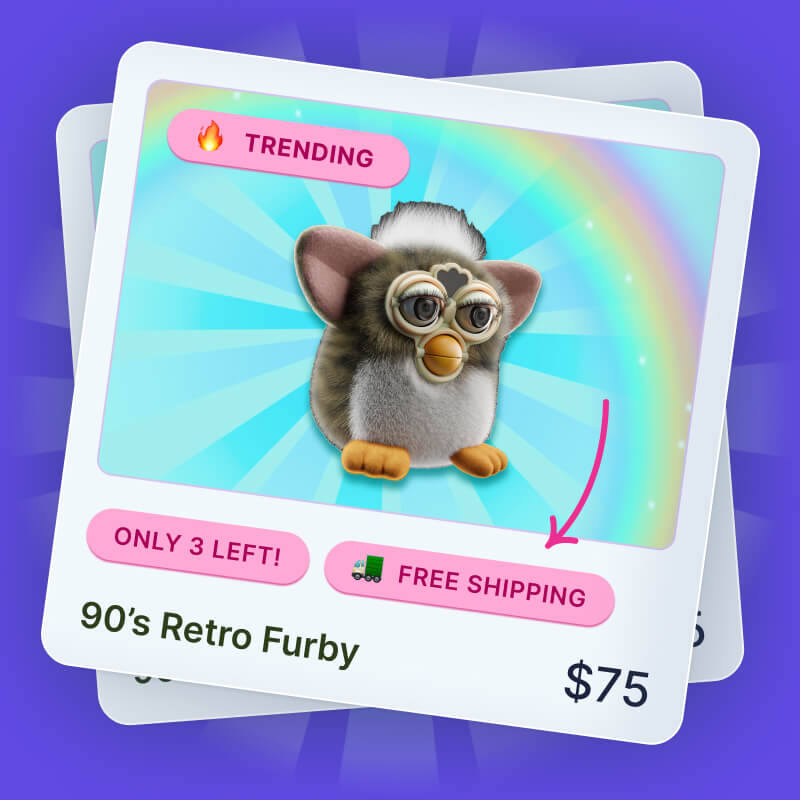Shopify BFCM 2025: How To Prepare Your Store in 18 Steps

The Black Friday and Cyber Monday (BFCM) weekend is make-or-break for many Shopify stores.
In 2023, Shopify merchants racked up a combined $9.3 billion in sales across the weekend, up 24% year on year. Over 61 million consumers made purchases from Shopify-powered stores, with the peak shopping time coming at 12:01 EST on Black Friday — when sales hit $4.2 million in a single minute.
But BFCM isn’t a guaranteed money-spinner.
Every other store is ramping up its promotional efforts at this key time of year. So if you’re going to succeed, you need to lay the groundwork in advance.
Read on to learn how to prepare your Shopify store for BFCM…
Store Preparation and Optimization
Chances are your website will need a little fine-tuning to make it BFCM-ready. Here’s where to focus your time and effort:
Analyze Previous BFCM Performance
Black Friday and Cyber Monday are simply too big of a deal to leave to chance.
Longer-standing stores get a head-start here, because they can analyze their previous BFCM performance — helping them to focus their optimization efforts in the right areas.
In particular, make sure you understand your:
- Top-selling products and collections: Which products flew off the shelves? And which simply didn’t sell despite all your promotional efforts?
- Discount strategy performance: Did customers flock to percentage-off discounts, multibuy offers, or product bundles? And did you run any promotions that fell flat?
- Most profitable sales channels: Where did the bulk of your sales and revenue come from — SEO, email marketing, social media, paid ads?
Don’t have any previous data to lean on? Don’t worry. There’s still plenty more you can do to prepare your store…
Prepare for Website Traffic Surges
BFCM has a major impact on global web traffic as consumers hunt for bargains online.
During Cyber Week 2023 (November 20 – 27), DNS traffic to e-commerce domains increased 15% week on week, with Cyber Monday generating slightly more activity than Black Friday:

That’s mostly a good thing for retailers — because more traffic = more sales, right?
But it also presents a potential problem: if your site can’t handle all that extra online footfall, you risk giving visitors a poor shopping experience.
Unfortunately, consumers are an unforgiving bunch. Three-fifths have abandoned purchases after being dissatisfied with the user experience, such as encountering slow loading speeds. What’s more, Google says a slow-down in page load time from one second to three seconds increases the probability of bounce by 32%.
So, you should optimize your loading speeds using tools like PageSpeed Insights and Pingdom to give yourself the best chance of delivering a smooth buying journey.
Build a Dedicated BFCM Collection (Early)
Unless you’re planning to discount every single product you sell, it makes sense to launch a dedicated BFCM collection to house all your special offers.
After creating your collection, you might think the best move is to leave it in drafts, then set it live during Cyber Week.
While there’s nothing wrong with that approach, we’d recommend maintaining a customer-facing BFCM collection year-round, just like Nordstrom does:

Having an always-on BFCM collection can offer significant SEO benefits.
For example, Nordstrom’s page currently ranks at #3 for the term “Black Friday clothing deals”, generating an estimated 19,000 monthly visits from organic searchers:

Bear in mind that 95% of newly published pages don’t make the top 10 on Google within a year. So the earlier you launch your BFCM collection, the more chance you have of securing strong rankings.
Pro tip: Learn everything you need to know about building and customizing collections in our guide: Shopify Collections & How to Use Them.
Plan Discounts and Promotions
Clearly, your discounting strategy has a huge impact on your BFCM performance.
If your discounts are uninspiring, shoppers will look elsewhere — it’s not like they’re short on options, right? But if you cut prices too aggressively, you’ll eat into your margins, which can quickly become unsustainable.
There’s no “perfect” approach to BFCM discounting. It all depends on your niche, brand, and audience. So we’d recommend experimenting with different promotion types to see what works best.
Many merchants find success using Shopify pop-up apps to promote limited-time offers, capture emails with exclusive deals, or recover abandoning visitors with special discounts.
Pro tip: Not sure which promotions and discounts to run this Cyber Week? Check out our article: Shopify Discounts - A Complete Guide.
Set Your BFCM Sales Period
Black Friday used to be a one-day event.
But, increasingly, brands are pushing the boundaries with their Cyber Week promotions.
Take a look at our inbox…

…and you’ll notice that we received the last of those promotional emails a full nine days after Cyber Monday.
Launching your BFCM sale before Black Friday and/or finishing after Cyber Monday helps you avoid competition and capitalize on early shopping intent.
On the flip side, search interest tails off real fast, as this Google Trends graph demonstrates:

And you don’t want to be targeting people with BFCM deals long after they’ve lost interest. So, once again, it’s all about experimenting to see what resonates with your audience.
Consider New Product Launches
Four in five retailers plan to introduce new products to capitalize on the surge in traffic and sales during Cyber Week.
You don’t even need to offer discounted rates. Instead, you can lure in customers with attractive promotions, then use upselling tactics to steer them toward your higher-priced, non-discounted new products.
Of course, a lot can go wrong around BFCM. So if you don’t want the stress of handling a full product launch but still want to offer customers something new, consider expanding your product range through dropshipping instead.
Pro tip: Learn more about dropshipping in our article: Dropshipping: The Definitive Guide.
Inventory Management and Logistics
Sure, handling logistics and inventory management isn’t the sexiest thing about running a Shopify store. But getting it right helps you deliver better customer experiences, which ultimately helps you sell more. Be sure to focus on these areas:
Define Your BFCM Shipping Policy
Nearly three-fifths of all online shopping cart abandonments are down to shipping-related issues.

So, if you want to maximize sales this Cyber Week, you’d better seriously consider your shipping policy.
Don’t currently ship purchases free of charge? We’ve got bad news for you: 62% of consumers won’t buy from retailers that don’t provide a free shipping option.
But it’s not all doom and gloom, because 47% of shoppers are happy to meet a minimum spending limit to qualify for free shipping. This means you can use free shipping to drive upsells and cross-sells.
Deodorant brand Duradry uses this to its advantage by using the shopping cart window to show how much more you need to spend to unlock free shipping:

Pro tip: Find out more in our article: How To Offer Free Shipping on Shopify & Increase Sales.
Plan for Peak Product Demand
Eighty-five percent of retailers say they’re at least somewhat worried about inventory shortages throughout BFCM.
On the face of things, selling out sounds like a good thing. But research warns that it can actually damage your reputation and erode customer confidence, with 73% of consumers saying they feel less loyal to retailers after experiencing product unavailability.
In short, you can’t afford to be caught out by high demand during Cyber Week.
Dig into your sales reports — especially Sales by Product — to identify your top sellers. And, if possible, review previous BFCM periods to see which products or collections saw the highest sales.
And if you’re seriously concerned about coping with demand, consider dropshipping to plug gaps in your inventory.
Stress-Test Customer Support
It stands to reason that an increase in store traffic during Cyber Week will lead to a similar upturn in customer support queries as shoppers seek key information like your:
- Shipping times and costs
- Returns and exchange policies
- Product specifications
Test each step of your store’s purchasing process, attempt to anticipate likely barriers to conversion, and ensure your support tools (like chat bots and live chat) are capable of coping with the heightened demand.
Offer Simple Returns
BFCM delivers increased sales for many retailers. But, unfortunately, not all of those sales will stick.
Data from returns management specialist ReBound shows that the last week of November (AKA Cyber Week) sees 8% more returns than the first week of December. What’s more, BFCM 2022 saw a 20.3% year-on-year increase in returns.
So it pays to revisit your returns policy ahead of this key shopping period.
Even if you don’t typically offer free returns, it’s worth considering this during Cyber Week, given that 87% of shoppers say it’s an important factor in their purchase decisions.

You should also think about extending your window for returns and exchanges to mitigate the potential issue of slower shipping times.
Set Contingency Plans
Assume that if something can go wrong during BFCM, it will go wrong.
This might sound needlessly pessimistic. But if you expect the worst, you’ll be better placed to create contingency plans to mitigate the challenges you face.
Will your suppliers be hit with delays? Will your shipping provider buckle under the weight of all those orders? Will you run out of your most popular products?
Consider all those worst-case scenarios — then come up with solutions.
BFCM Marketing
You can’t expect shoppers to come rushing to your BFCM deals without some smart promotion. After all, everyone offers discounts during Cyber Week. So if you’re going to succeed, you need to nail your marketing efforts.
Here are eight marketing-related factors to focus on:
Use Product Badges To Highlight Deals and Create Urgency
It’s not enough to create a Shopify collection full of all your BFCM deals.
You also want to showcase your best offers. That way, shoppers find your most attractive discounts faster, which means they’re more likely to convert.
The best way to steer customers toward your top deals is to add product badges to promote your sale items:

But product badges aren’t just about drawing attention to the superb savings you’re offering.
You can also use them to create scarcity and urgency by highlighting low-stock products and/or time-limited deals — another effective way to boost conversion rates.

Grow Your Shopify Sales by over 175% with Flair
-
Increase sales using product badges and sales banners
-
Maximize conversions with scarcity, urgency and countdown timers
-
Automate promotions with targeted rules and scheduling
Add a BFCM Countdown Timer To Key Pages
Everyone knows your Cyber Week deals won’t be around forever.
But it’s still worth giving them a subtle reminder by adding a countdown timer to key pages on your site, including your:
- Homepage
- Collections
- Product pages
Here’s how that could look:

Like product badges, countdown timers can have a big (positive) impact on your store’s conversion rate.
Indeed, one analysis of e-commerce popups discovered that those containing countdown timers convert at a 113% higher rate:

Pro tip: Discover more ways to drive immediate action and boost conversions in our guide: While Supplies Last: 8 Scarcity & Urgency Tactics.
Use BFCM To Boost Email Capture
Cyber Week has a mutually beneficial relationship with email marketing.
For one thing, you can use email to boost BFCM traffic and sales by promoting your best deals to newsletter subscribers, just like in this example from guitar brand Orangewood:
But it also works the other way around: you can use BFCM to build your marketing list by asking shoppers to hand over their email address so they'll be the first to know about your best deals.
For an extra incentive, you could boost email signups by promising early access to your Black Friday sale, like fashion brand Wodbottom did here:

Pro tip: Learn about another of our favorite e-commerce lead generation tactics in our guide: How To Create a Shopify Coming Soon Page With Examples.
Offer Perks To Loyal Customers
BFCM is often seen as an opportunity to attract new customers.
But what about those folks who stick with you through thick and thin: your loyal repeat buyers?
Repeat customers make up just 21% of the average e-commerce store’s customer base — yet they generate 44% of all revenue and 46% of orders. Growing your repeat customer base by one-fifth could deliver up to a 6% increase in total revenue.

Clearly, those repeat shoppers deserve some sort of reward.
So why not repay their loyalty by giving them access to your best BFCM deals? This might include offering:
- Tiered rewards based on the customer’s spending history
- Extra discounts for previous customers
- Early access to your Cyber Week sale
Promote Top Deals on Social Media
Of course, rewarding existing customers doesn’t mean you should forget about acquiring new ones.
If you’re going to attract first-timers to your store, you need to reach them via their favorite online channels. Most likely, that’ll involve targeting them on social media.
Expand your customer base by sharing your top deals on social, just like Benefit Cosmetics did in this Instagram post:
If you’ve got the budget, you can expand your reach further through social media advertising.
Just be aware that social ads can get real expensive, real fast, with a single ad click costing $0.65 on Facebook and $1.19 on Instagram.

Pro tip: Learn more about e-commerce advertising in our guide: How To Advertise Your Shopify Store: 8 Proven Tactics.
Retain Shoppers With Exit-Intent Popups
Unfortunately, however attractive your BFCM deals are, only a small proportion of people who visit your store will actually buy.
In fact, the folks at e-commerce personalization platform Fresh Relevance claim that of every 100 people who land on your store, 39 will browse your products — but only four will place an order.
If only you could change some of those shoppers’ minds before they quit your site.
Actually, you can — by setting up exit-intent popups. These are basically what they sound like: popups that are triggered when it looks like a shopper is about to ditch your store.
Here’s an example, courtesy of underwear brand Oddballs:
Pro tip: Let’s be honest: exit-intent popups can be effective, but they’re also kind of annoying. So we recommend using them only on high-intent pages (i.e. product and shopping cart pages).
Target Cart Abandoners Via Email
Over 70% of all online shopping carts end up being abandoned.
Ouch.
But it’s not all bad news, because you can win back a big chunk of that lost revenue by sending cart abandonment emails. These triggered emails see open rates of 43%+...

…and they convert at a rate of 18.64%, which is way higher than the average e-commerce marketing email.
Here’s an example from holistic cycle care brand Rael:

Pro tip: For best results, send abandoned cart emails within 24 hours, remind shoppers of the product(s) left in their shopping cart, and add a CTA to complete the purchase. FAQs
What is the Shopify Black Friday sales record?
In 2023, Shopify merchants generated a record-high $4.1 billion in combined sales, up 22% on the previous year. Activity peaked at 12:01 pm EST on Black Friday, when Shopify recorded $4.2 million of total sales in a single minute.
What is the record for Cyber Monday sales?
Cyber Monday sales reached a record $12.4 billion in 2023, according to Adobe Analytics. This represented a year-on-year increase of 9.6%. The peak shopping period fell from 10:00 – 11:00 pm EST, when consumers spent $15.7 million every minute.
When should you start planning for Black Friday?
With 44% of consumers planning to start shopping for the holidays in October or earlier, it makes sense for retailers to begin planning for Black Friday as early as possible. Finalize your deals and promotions at least a month before the event, and leave your BFCM collection up all year round to boost search rankings.







